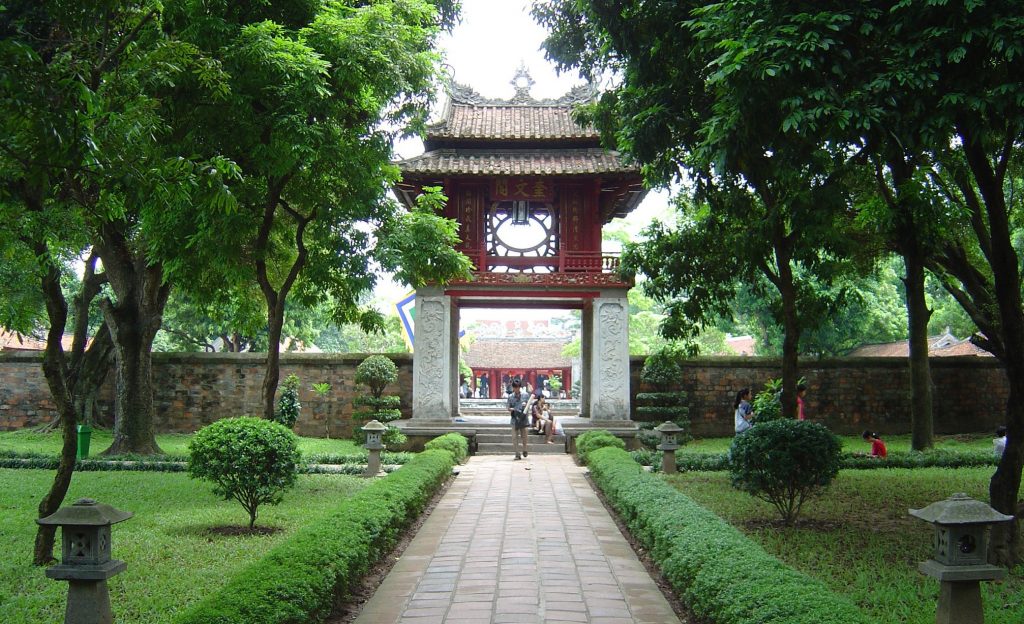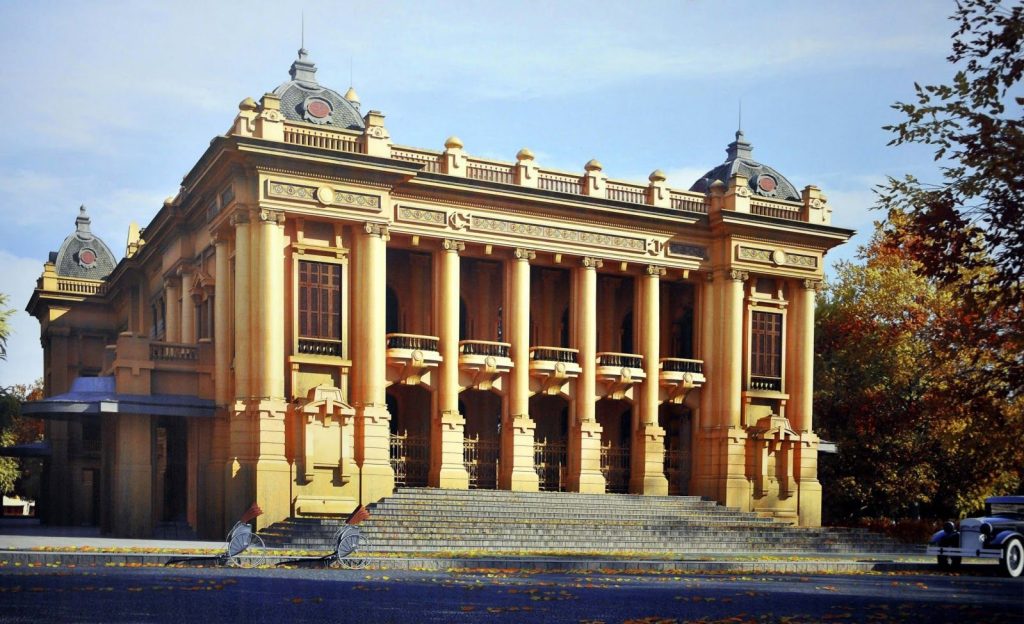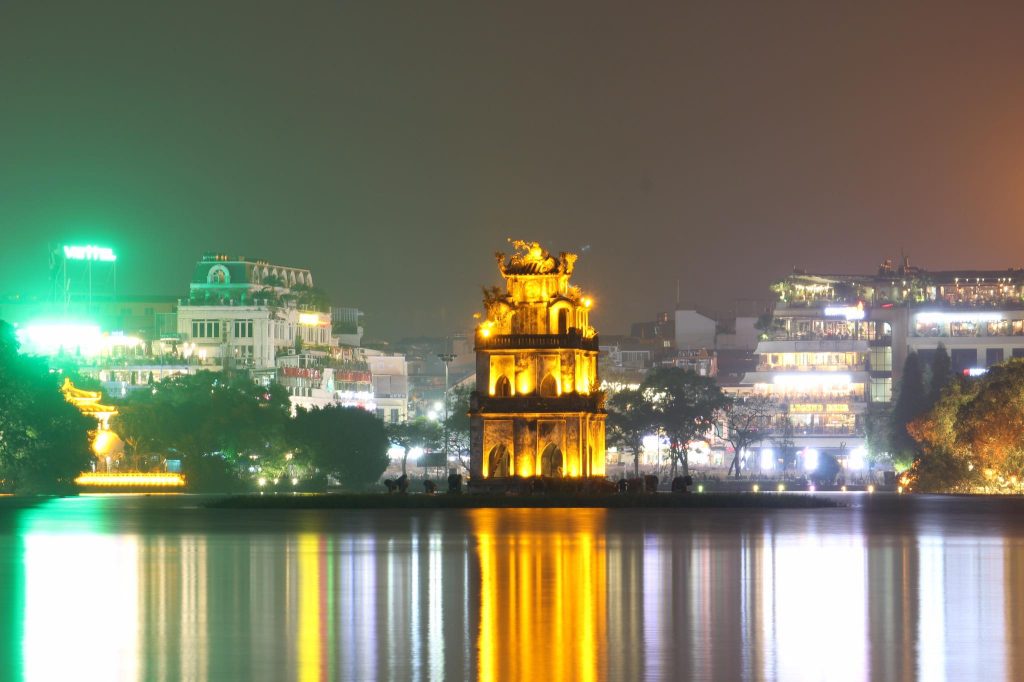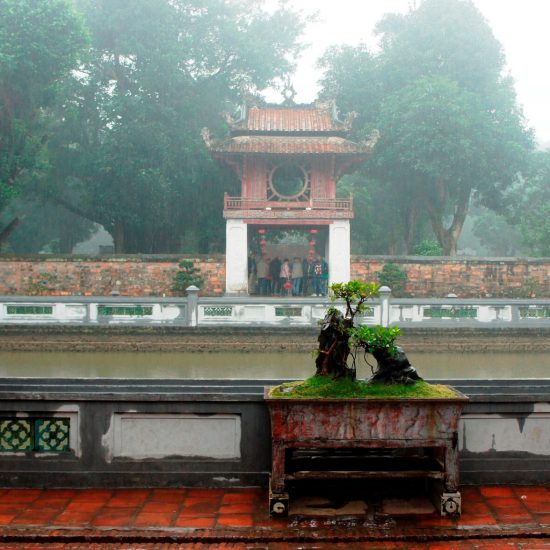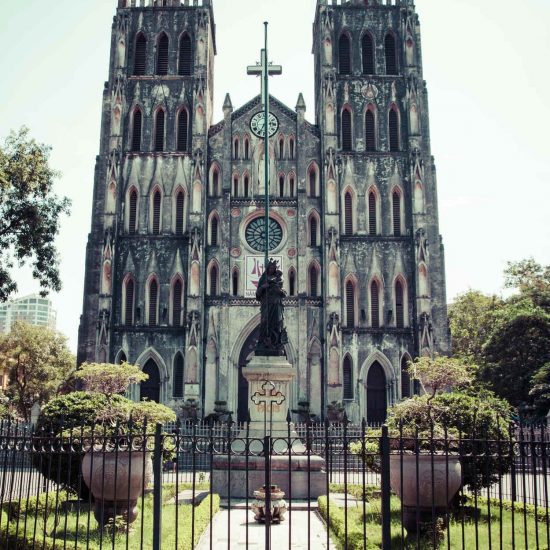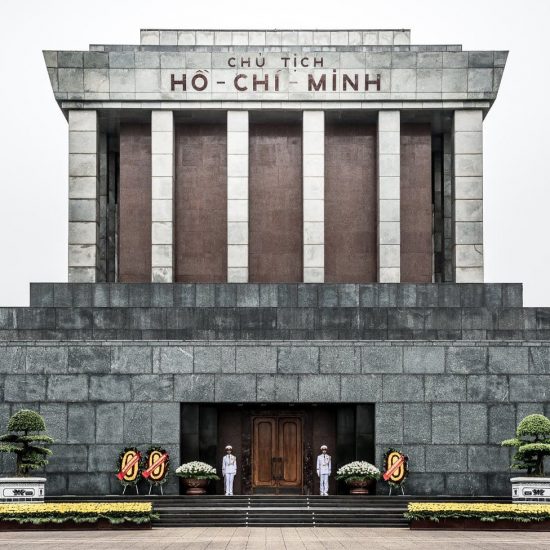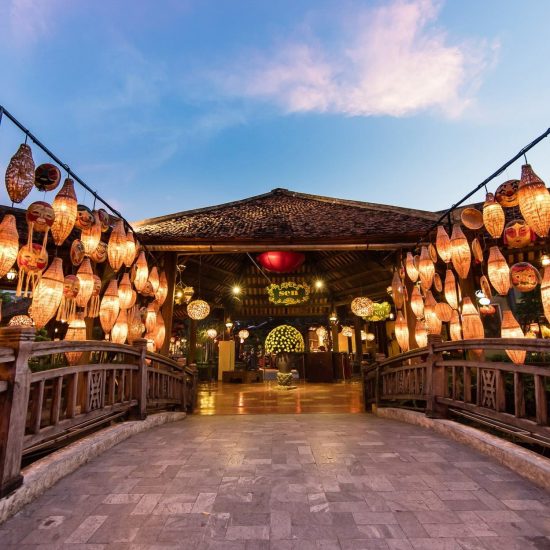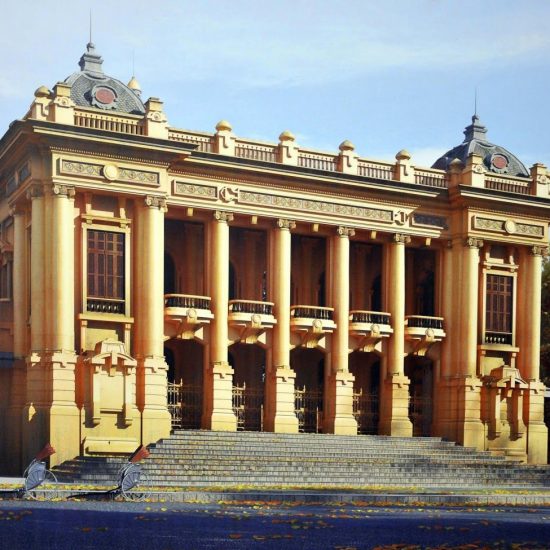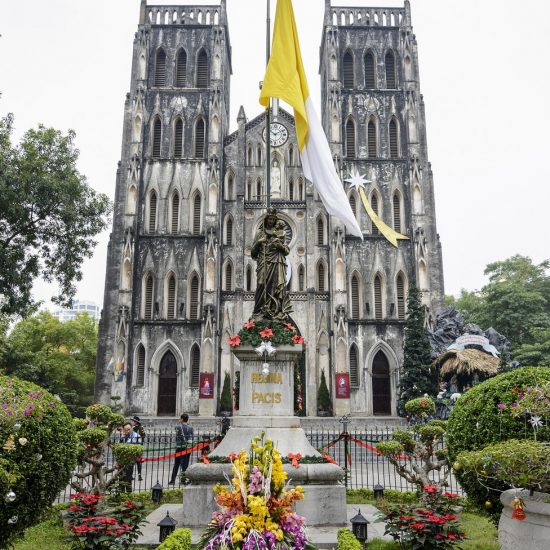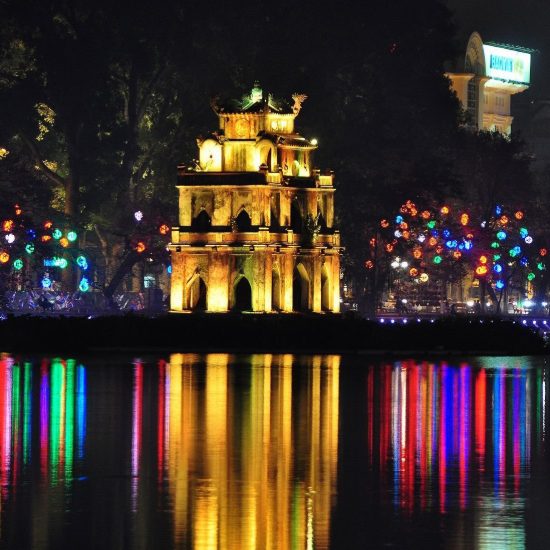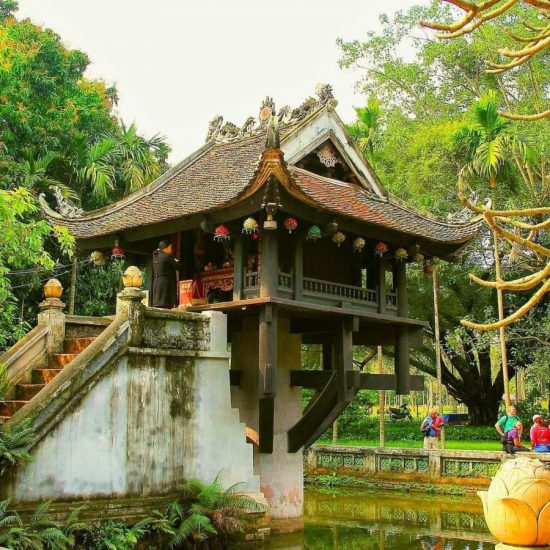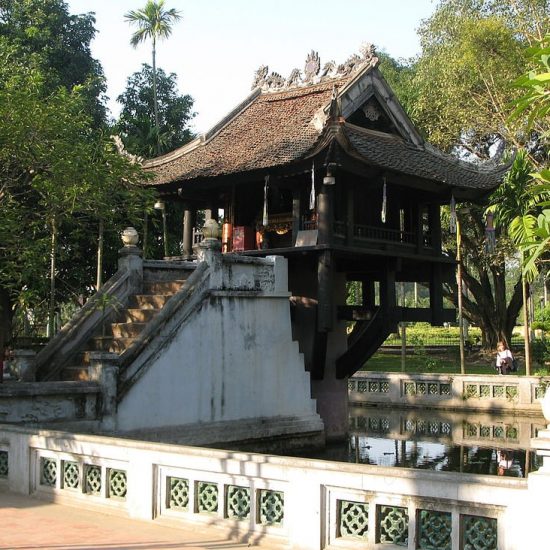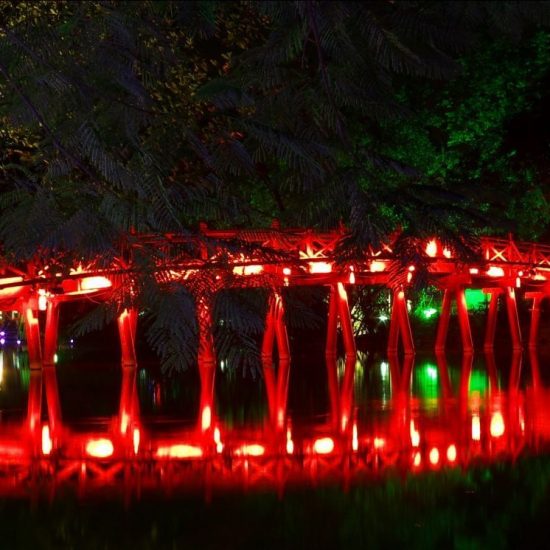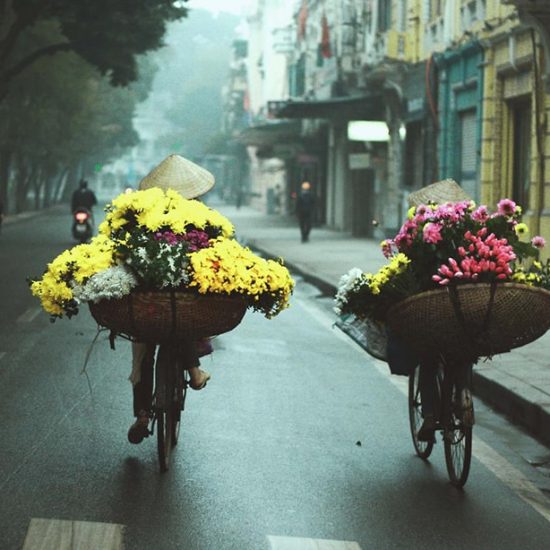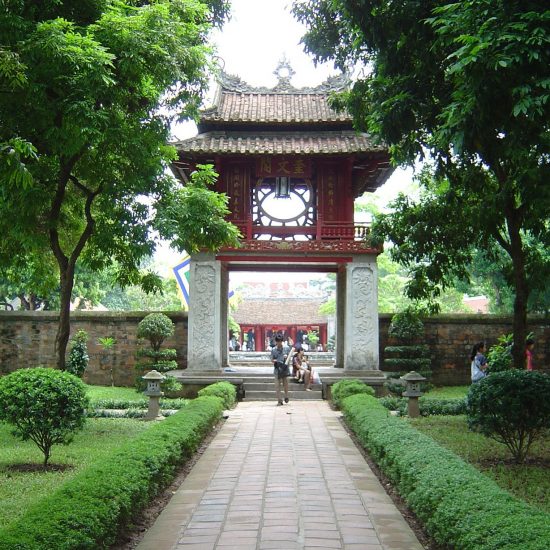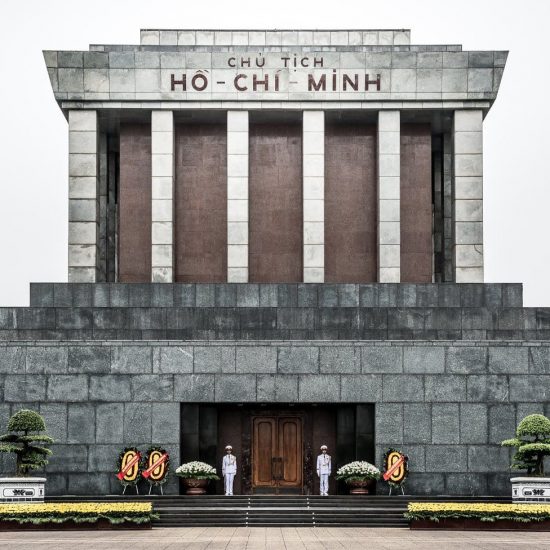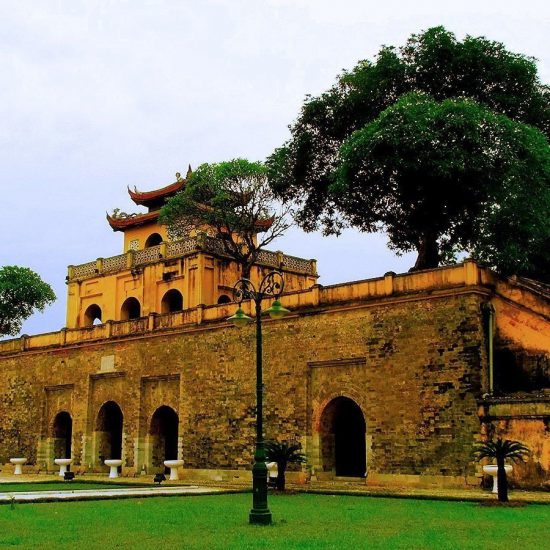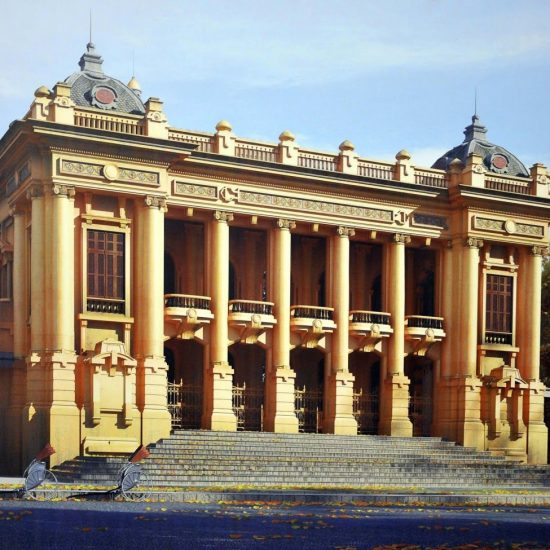To combine eating with exploration, head to these locations crammed with interesting restaurants and food stalls.
Pho Cam Chi This narrow lane is packed with local eateries turning out cheap, tasty food for a few dollars. Cam Chi translates as ‘Forbidden to Point’ and dates from centuries ago. It is said that the street was named as a reminder for the local residents to keep their curious fingers in their pockets when the king and his entourage went through the neighbourhood. Cam Chi is about 500m northeast of Hanoi train station. Adjoining Tong Duy Tan is also crammed with good eating.

Ðuong Thuy Khue On the southern bank of West Lake, Ð Thuy Khue features dozens of outdoor seafood restaurants with a lakeside setting. The level of competition is evident by the daredevil touts who literally throw themselves in front of oncoming traffic to steer people towards their tables. You can eat well here for about 150,000d per person.
Truc Bach A quieter waterfront scene is around the northeast edge of Truc Bach Lake. Many lau (hotpot) restaurants are huddled together in an almost continuous strip for a few hundred metres. Grab a few friends and settle in at one of the dinky lakeside tables for a DIY session of fresh seafood, chicken or beef. It’s perfect on a cool Hanoi night.
Pho Nghi Tam About 10km north of central Hanoi, P Nghi Tam has a 1km-long stretch of about 60 dog-meat restaurants: keep an eye out for the words thit cho (dog meat). Hanoians believe that eating dog meat in the first half of the month brings bad luck, so the restaurants are deserted then. On the last day of the lunar month, however, they’re packed with locals.
Cho Am Thuc Ngoc Lam Across the Song Hong (Red River), in Long Bien, this sprawling riverfront food street is popular with locals and heavy on seafood. There are excellent views of the Chuong Duong and Long Bien bridges. Beware the cluster of thit cho dog-meat restaurants at the start of the strip.
6. Drinking & Nightlife
Hanoi’s eclectic drinking scene features grungy dive bars, Western-style pubs, one gay bar, sleek lounge bars, cafes and hundreds of bia hoi joints.
The best places for a bar crawl include traveller-friendly P Ta Hien in the Old Quarter, and Ngo Bao Khanh near the northwest edge of Hoan Kiem Lake. An alternative scene, popular with expats, is on P Xuan Dieu in the West Lake area.
Don’t Miss: Bia Ahoy!
‘Tram phan tram!’ Remember these words, as all over Vietnam, glasses of bia hoi are raised and emptied, and cries of tram phan tram (‘100%’ or ‘bottoms up’) echo around the table.
Bia hoi is Vietnam’s very own draught beer or microbrew. This refreshing, light-bodied pilsner was first introduced to Vietnam by the Czechs in a display of Communist solidarity. Brewed without preservatives, it is meant to be enjoyed immediately and costs as little as 5000d a glass.
Hanoi is the bia hoi capital of Vietnam and there are microbars on many Old Quarter street corners. A wildly popular place unofficially known as ‘Bia Hoi junction’ and ‘Beer Corner’ is at the corner of P Ta Hien and P Luong Ngoc Quyen, in the heart of the Old Quarter. It’s now packed with backpackers and travellers though, and has lost most of its local charm. Did you really come all this way to drink Heineken and talk to boozed neighbours from Jersey City or Johnsonville?
An alternative, more local bia hoi junction is where P Nha Hoa or P Bat Dan meets P Duong Thanh on the western edge of the Old Quarter. For something to go with the beer, Bia Hoi Ha Noi also does the best spare ribs in town; Nha Hang Lan Chin is famed for vit quay (roast duck); and you can’t go past Quan Bia Minh for well-priced Vietnamese food and excellent service led by the eponymous Mrs Minh.
Curfew
Hanoi is definitely not a clubbers’ paradise, and the often-enforced curfew means dancing is pretty much confined to bar-clubs in and around the Old Quarter. The no-fun police supervise strict opening hours and regularly show up to compel the closure of bars and clubs that flout this law. This makes for minimal action after midnight during the week. Weekends are getting busier now that the Old Quarter is allowed to stay open until 2am on Fridays, Saturdays and Sundays. In any case, lock-in action after curfew does occur; ask around in Hanoi’s hostels to find out which bars are currently staying open beyond the witching hour.
There is plenty of Vietnamese folk and traditional theatre aimed at visitors. If water puppets and showy costumes are not your thing, seek out small cafes that double as performance spaces where jazz and other vocalists perform almost within touching distance.
Music
Traditional music is usually performed daily at the Temple of Literature.
Don’t Miss: Punch & Judy in a Pool
The ancient art of water puppetry (roi nuoc) was virtually unknown outside of northern Vietnam until the 1960s. It originated with rice farmers who worked the flooded fields of the Red River Delta. Some say they saw the potential of the water as a dynamic stage; others say they adapted conventional puppetry during a massive flood. Whatever the real story, the art form is at least 1000 years old. Performances take place at the Municipal Water Puppet Theatre.
The farmers carved the human and animal puppets from water-resistant fig-tree timber (sung) and staged performances in ponds, lakes or flooded paddy fields. Today a tank of waist-deep water is used for the ‘stage’. The glossy, painted puppets are up to 50cm long and weigh as much as 15kg. Some puppets are simply attached to a long pole, while others are set on a floating base, in turn attached to a pole. In the darkened auditorium, it appears as if they are walking on water. If used continually, each puppet has a lifespan of about four months: puppet production provides several villages outside Hanoi with a full-time livelihood.
Eleven puppeteers, each trained for a minimum of three years, are involved in the performance. Their considerable skills were traditionally passed only from father to son, for fear that daughters would marry outside the village and take the secrets with them.
Traditional live music is as important as the action on stage. Each memorable performance consists of a number of vignettes depicting pastoral scenes and legends. One scene tells of the battle between a fisherman and his prey, which is so electric it is as if a live fish were being used. There are also fire-breathing dragons (complete with fireworks) and a flute-playing boy riding a buffalo.
The water puppets are both amusing and graceful, appearing and disappearing as if by magic. Spectators in front-row seats can expect a bit of a splash!




